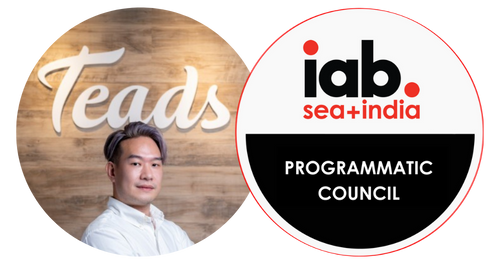
Industry Discussion | Adrian Teh, Teads
What Is A Cookieless Future?
The cookieless future refers to a recent shift away from using third-party cookies for various purposes. Apple and Mozilla have already begun to limit the use of third-party cookies on their browsers and Google has announced its decision to eventually follow suit.
So how does this impact marketers especially in programmatic operations? Adrian Teh, Teads, led an IAB SEA+India Industry Discussion to help answer this question.
The digital advertising industry, including programmatic advertising, has heavily relied on cookies to gain insight, run cross-site targeting, retargeting, and marketing attribution.
Cookies are essentially pieces of information saved by the browser that help businesses identify users online and deliver a targeted advertisement to them. Advertising platforms often use cookies to reach customers that are most likely to engage with the brand.
In this discussion we would try to identify the impact of cookieless, and gain more insights to how the industry is reacting to it.
First-party cookies are placed on sites with user opt-in, and help the site owner offer more relevant content and smoother user experiences by remembering visitor preferences. Just like your favourite Barista.
Third-party cookies, on the other hand, are placed on the site by third-parties, usually ad-networks, who sell access to these audiences to advertisers so they can run more targeted digital advertising campaigns.
Cookies in general can pose a significant data security risk, and some consider them to violate user privacy rights. Cookies, while not inherently dangerous, can be hijacked and used to gather information by malicious actors. In order to protect the users data more and more countries are applying stricter rules and regulations. To abide by these rules and regulations and to safeguard the future we are moving to a Cookieless era.
Will Cookieless affect programmatic operations?
Cookies have played an important role in digital marketing and will continue to play an important role in the future. However, transitioning to a cookieless future will have an impact on our fellow marketers, but not necessarily in a negative way.
A popular online marketing tool for gathering information on customer behaviour is being phased out, forcing industry professionals to look for alternative methods. Due to privacy concerns, browsers have decided to stop tracking cookie data, which tracks users’ actions on websites. Apple/Safari browsers now block cookies, and Google plans similar changes for its market-leading Chrome browser by 2024. This is a significant shift from a traditional cookie-based advertising strategy. Third-party cookies are particularly vulnerable.
There are real worries and ambiguities for marketers as we move toward cookie-less. The main topics generally revolve around the efficiency of budget spend, how to track properly so there is no wastage, and correctly accrediting our strategy. Also how we can reach our right audience and garner the right insights. Although the removal of third-party cookies will undoubtedly cause disruption, we still have a number of options for the future.
Contextual targeting. Predating the use of cookies and other “new-fangled” tech, contextual targeting simply places advertisements on related marketing channels — and with great success. Here, you can simply display ads on related websites and channels instead of going through the trouble of asking for user consent and safeguarding privacy.
Universal IDs. As the tech world moves away from cookies, many tech platforms are turning to universal identifiers. Though Google Chrome doesn’t plan to support them, many other platforms are embracing them as a convenient means of identifying users without the security risks. These IDs are usually offered through security platforms that offer interoperable, secure means of tracking users across the web.
Cohorts. Similar to contextual targeting, using cohorts — or grouping users together based on similar interests — remains a simple but effective means of tracking. Again, instead of worrying about individual identification, platforms can use activity information to deliver consistent, targeted experiences to groups of people who display similar characteristics, interests, or hobbies.
On-device solutions. Device data also has the potential to further improve cohorts. Here, instead of marketing to individuals based on their device data, devices can instead reveal only as much information as a third party needs to classify their users into a certain cohort. In doing so, users maintain their anonymity while marketers can still deliver targeted experiences based on proven user activity.
There is no one-size-fits-all solution among the available options, and new solutions to address cookieless will undoubtedly emerge. It will be necessary to use multiple Cookieless options and adapt to the best performing ones.
Summary
Everyone involved in advertising and online marketing must take proactive steps to prepare for third-party cookie changes. Publishers should implement consent mechanisms and monetize with contextual ads, while advertisers should consider alternative methods of targeting and attribution. The main demand of the upcoming cookieless era is, ultimately, to protect user privacy while serving advertisements.
However, in the long run, a cookieless future may be beneficial to digital marketing. Marketers will have to find other ways to reach their audiences if cookies are not used. This could result in more creative and innovative campaigns that focus on providing value rather than simply selling products.

